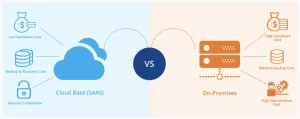A high-performing landing page is more than just a flashy design. It needs to be optimized for search engines and built to convert visitors. In this article, we’ll break down what are the best practices for landing page SEO, show you how to match your content with user intent, and reveal the tactics top marketers use to get both organic traffic and conversions. Whether you’re building a B2B funnel or trying to grow your email list, you’ll get actionable strategies backed by results. Let’s dive right into what matters most.
The Distinction Between SEO and PPC Landing Pages
A PPC landing page is typically hyper-focused on a single goal—such as collecting emails or driving sales—often with minimal distractions. It’s designed for immediate conversion, assuming the visitor has already clicked an ad with intent.
SEO landing pages, on the other hand, must do a little more heavy lifting. They need to satisfy both the search engine and the user. These pages target long-tail keywords, answer specific questions, and provide valuable, crawlable content that is relevant to the target audience. Unlike PPC pages, which may only include a catchy headline and a form, SEO pages often incorporate internal links, FAQs, rich content, and optimized metadata. They’re structured for long-term visibility, not just short-term conversion.
If you want a page that ranks and converts, you’ll need to blend the strengths of both models—and that’s what the best do.
Importance of Keyword Research

Great SEO always starts with understanding how your audience searches for what you offer. It’s not enough to guess; you need to know the search volume, the difficulty of ranking, and the exact phrases potential customers are typing into Google.
For example, if you’re offering a lead magnet for real estate investors, “real estate investing tips” might be too broad and competitive. However, something like “Beginner Real Estate Investment Guide PDF” is specific and shows clear intent. That’s where tools like Ubersuggest, SEMrush, and Google’s Keyword Planner shine. They give you the data so you can reverse-engineer what works.
And don’t just stop at primary keywords. Use related terms, semantic keywords, and even location-based terms if your landing page is local. If people in Austin are looking for “SEO expert Austin,” and you’re in that area, you better include it—naturally.
Aligning Content with Search Intent
If someone searches for “how to build a Shopify store,” and your landing page is just pushing a course without answering that question, you’ll get a high bounce rate and poor rankings.
Google cares deeply about intent. That’s why landing page content needs to be tailored:
- If the query is informational, offer a guide or useful tips.
- If the query is transactional, show product benefits, pricing, and calls to action.
- If it’s navigational, ensure brand consistency and elements that build trust.
Put yourself in the shoes of the searcher. What are they looking for right now? What would make them stop scrolling and engage with your page? The closer your content aligns with that mindset, the better your SEO and conversion performance will be.
On-Page SEO Techniques
Once your intent and keywords are clear, it’s time to optimize what Google reads. That means title tags that start strong with the primary keyword, meta descriptions that entice clicks, and headers (H1, H2, H3) that guide both bots and humans.
Use internal links to direct people to relevant support content, such as blog posts or case studies, and don’t forget to include alt tags for images. Structure matters. A clear hierarchy helps bots crawl your page more effectively.
Avoid keyword stuffing. Use your terms naturally. If you sound like a robot, Google will treat you like one.
Mobile Optimization
More than 60% of all search traffic now comes from mobile devices. If your landing page isn’t mobile-optimized, you’re leaving money on the table. Responsive design is no longer optional—it’s mandatory.
Make sure all action buttons are thumb-friendly. Your text should be readable without zooming. Page layout must stack cleanly on smaller screens, and loading times need to be fast. Nothing kills conversions like a laggy mobile experience.
And here’s the thing: mobile users are often closer to making a decision. So, a seamless mobile experience doesn’t just improve bounce rates—it drives actual revenue.
Enhancing Page Speed and Load Times
You don’t get a second chance at a first impression, especially online. If your page takes more than 3 seconds to load, most users bounce. That’s a conversion killer and an SEO problem rolled into one.
Compress images. Minimize scripts. Utilize a fast and reliable hosting provider. If you’re using a landing page builder like Unbounce or Webflow, monitor the scripts it adds. Run regular checks with tools like Google PageSpeed Insights and GTmetrix. Even shaving off half a second can make a real impact.
Remember: faster pages lead to better rankings and happier users.
Creating High-Quality Content
SEO isn’t just about sprinkling keywords around—it’s about creating valuable content. That means original, helpful information written in a tone that resonates with your audience.
If your landing page promises a free PDF, the description should answer: What’s inside? Why should I care? What will I be able to do differently after reading it? Use testimonials, visuals, and benefit-driven bullet points (but don’t overdo it).
And no fluff. If someone lands on your page and thinks, “That’s exactly what I needed,” you’ve hit the mark.
Building Relevant Backlinks
Backlinks remain a top-ranking factor, especially from sites within your niche.
Reach out to bloggers who cover similar topics. Offer guest posts. List your page in directories or resource hubs. Leverage HARO to become a quoted expert and link back to your landing page.
But don’t buy shady backlinks. Google’s smarter than that. One high-quality backlink from a trusted source is worth more than 50 low-quality ones.
Regular Testing and Tracking Performance
Your landing page needs constant tuning. Set up Google Analytics and Google Search Console: track click-through rates, bounce rates, and time on page.
Test your headlines. Test your forms. Try different CTAs. Even something as simple as changing “Get Your Free Guide” to “Download My Free Guide” can make a significant difference.
Also, check your rankings for target keywords on a monthly basis. See who’s rising and falling in your niche. Adapt accordingly.
Addressing Common SEO Challenges

Optimizing for Google, not humans. Google wants the same thing your visitors do: relevance, clarity, and value.
Another challenge is balancing copy with design. Too much text can feel cluttered; too little, and you won’t rank. Work with a copywriter who understands both storytelling and SEO.
Finally, avoid over-optimization. If your content reads like you’re trying too hard to rank, you’ll do the opposite.
Examples of High-Performing Landing Pages
It ranks for “start an online store” and converts at a high rate. Why? It answers search intent, loads quickly, features a compelling call-to-action (CTA) and incorporates relevant keywords throughout its content.
Another great one? Neil Patel’s own “SEO Analyzer” tool page. It ranks, it educates, and it converts—by offering real value upfront.
Examine competitors who dominate your market space. Reverse-engineer what they’re doing well. Then do it better.
Conclusion
Optimizing a landing page for SEO isn’t rocket science—but it’s not guesswork either. The best pages are built with intent, fueled by data, and refined through testing. If you focus on creating valuable content, targeting the right keywords, and building a flawless user experience, your landing page will climb the rankings—and your conversions will follow.
Want better results? Stop thinking about SEO as a checklist. Start treating it as part of your customer journey.
ALSO READ: What are the Tips for improving Google Ads’ performance?
FAQs
They include targeting relevant keywords, aligning with user intent, optimizing page speed, and creating high-quality content.
There’s no magic number, but 500–1500 words are often ideal, depending on the topic and intent.
It’s possible but difficult. Quality backlinks significantly boost SEO authority and rankings.
Only if it’s designed for both PPC pages can be thin; SEO pages must offer more content and structure.
Absolutely. Long-tail keywords help target specific search intent and often face less competition.




